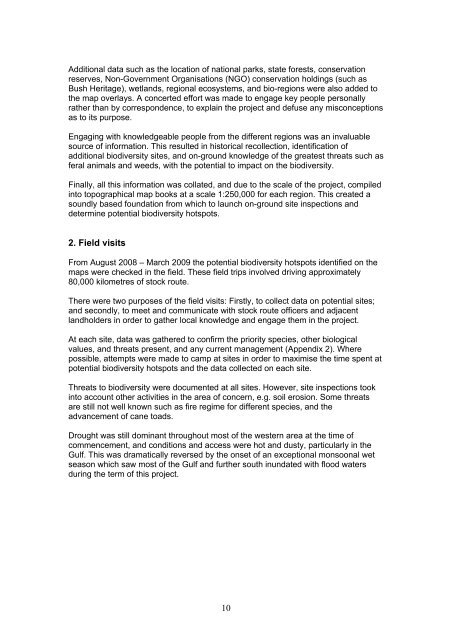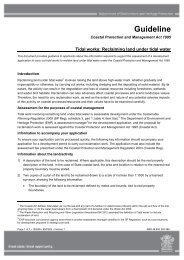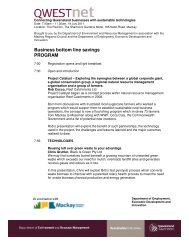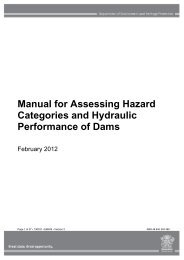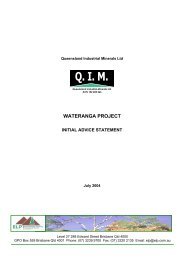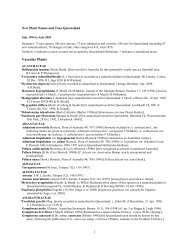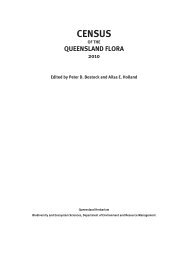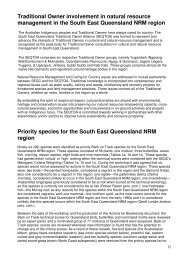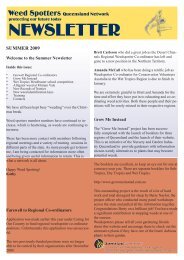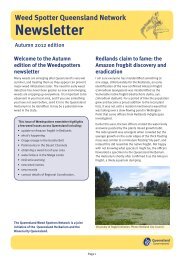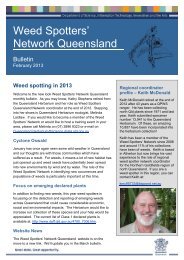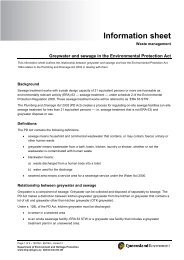Enhancing Biodiversity Hotspots Along Western Queensland Stock ...
Enhancing Biodiversity Hotspots Along Western Queensland Stock ...
Enhancing Biodiversity Hotspots Along Western Queensland Stock ...
Create successful ePaper yourself
Turn your PDF publications into a flip-book with our unique Google optimized e-Paper software.
Additional data such as the location of national parks, state forests, conservation<br />
reserves, Non-Government Organisations (NGO) conservation holdings (such as<br />
Bush Heritage), wetlands, regional ecosystems, and bio-regions were also added to<br />
the map overlays. A concerted effort was made to engage key people personally<br />
rather than by correspondence, to explain the project and defuse any misconceptions<br />
as to its purpose.<br />
Engaging with knowledgeable people from the different regions was an invaluable<br />
source of information. This resulted in historical recollection, identification of<br />
additional biodiversity sites, and on-ground knowledge of the greatest threats such as<br />
feral animals and weeds, with the potential to impact on the biodiversity.<br />
Finally, all this information was collated, and due to the scale of the project, compiled<br />
into topographical map books at a scale 1:250,000 for each region. This created a<br />
soundly based foundation from which to launch on-ground site inspections and<br />
determine potential biodiversity hotspots.<br />
2. Field visits<br />
From August 2008 – March 2009 the potential biodiversity hotspots identified on the<br />
maps were checked in the field. These field trips involved driving approximately<br />
80,000 kilometres of stock route.<br />
There were two purposes of the field visits: Firstly, to collect data on potential sites;<br />
and secondly, to meet and communicate with stock route officers and adjacent<br />
landholders in order to gather local knowledge and engage them in the project.<br />
At each site, data was gathered to confirm the priority species, other biological<br />
values, and threats present, and any current management (Appendix 2). Where<br />
possible, attempts were made to camp at sites in order to maximise the time spent at<br />
potential biodiversity hotspots and the data collected on each site.<br />
Threats to biodiversity were documented at all sites. However, site inspections took<br />
into account other activities in the area of concern, e.g. soil erosion. Some threats<br />
are still not well known such as fire regime for different species, and the<br />
advancement of cane toads.<br />
Drought was still dominant throughout most of the western area at the time of<br />
commencement, and conditions and access were hot and dusty, particularly in the<br />
Gulf. This was dramatically reversed by the onset of an exceptional monsoonal wet<br />
season which saw most of the Gulf and further south inundated with flood waters<br />
during the term of this project.<br />
10


